April
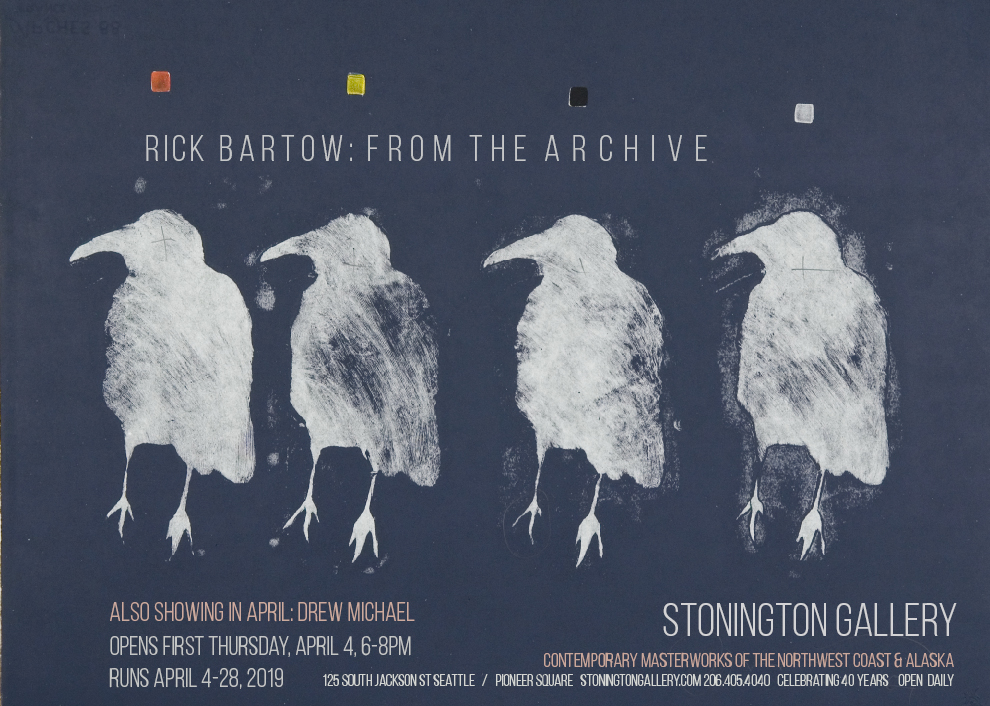
Exhibition runs April 4-28. Installation April 1-4.
Special Event: Charles Froelick Speaks About the Life, Works and Legacy of Rick Bartow – Wednesday, April 10th, 6:30pm.
This April we are proud to feature works on paper by late artist Rick Bartow (Wiyot). Some of these original paintings and monotypes are emerging from the artist’s archive and have not been readily available since his passing. All bear the signature hallmarks of Bartow’s oeuvre: energetic, organic marks from his hands and fingers; enigmatic words and numbers emerging from the subconscious; and a tight connection to the natural and spirit worlds. Bartow’s artistry taps into the vitality of a parallel world where mythic characters clash and clamor with tangible force. His work invites us to enter this reality, and guides us through its rhythms and rituals. In his hands, the realm of the spirit is not a quiet abstraction, but a place that can bite, bleed and sing.
Exhibition Dates:
April 4, 2019 - April 28, 2019Involved Artists:
Featured Works
-
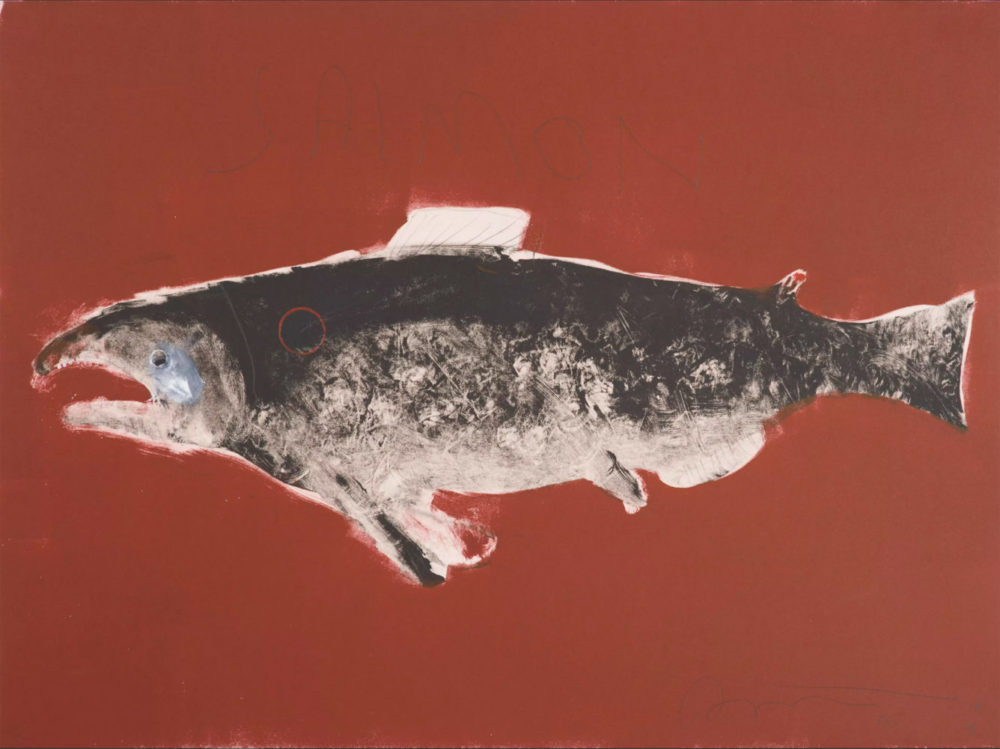 Rick BartowSalmon for Jim M. (2006)Monotype
Rick BartowSalmon for Jim M. (2006)Monotype- 22"h
- 30"w
SOLD -
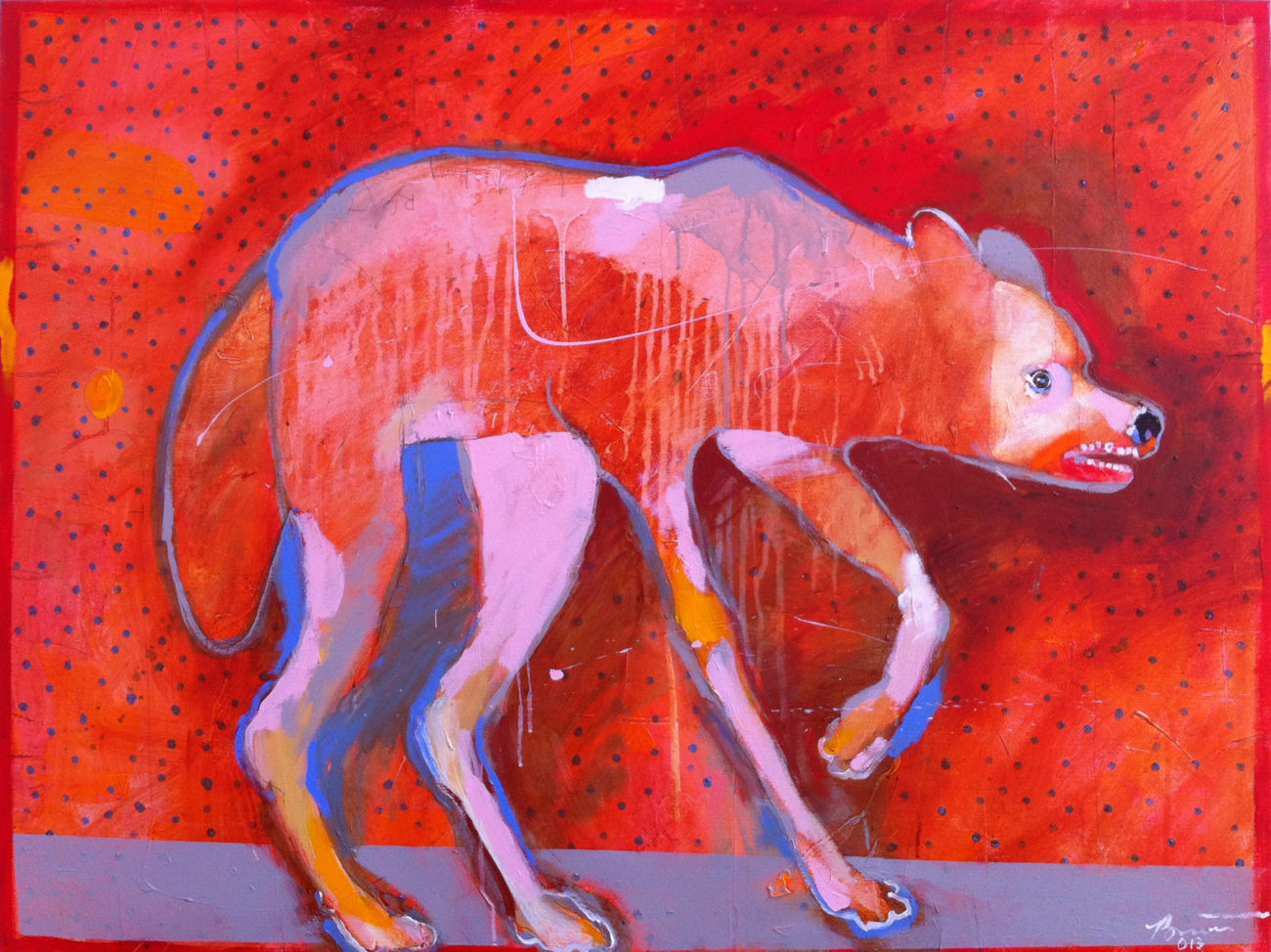 Rick BartowWet Dog (2013)Acrylic on Canvas
Rick BartowWet Dog (2013)Acrylic on Canvas- 36"h
- 48"w
SOLD -
 Rick BartowMonet I (1979)Pastel, Graphite on Paper
Rick BartowMonet I (1979)Pastel, Graphite on Paper- 24"h
- 19"w
SOLD -
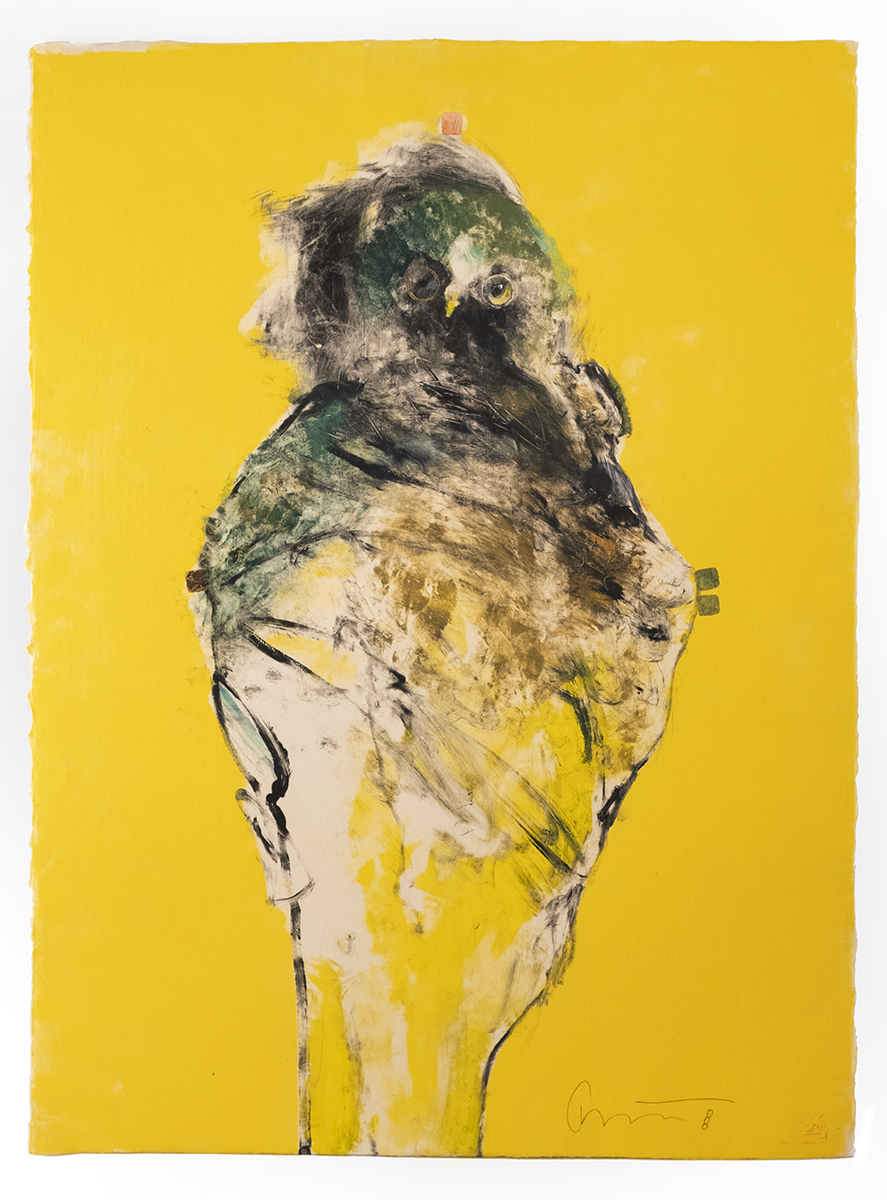 Rick BartowHawk on Yellow Field (2008)Monotype
Rick BartowHawk on Yellow Field (2008)Monotype- 30"h
- 22"w
SOLD -
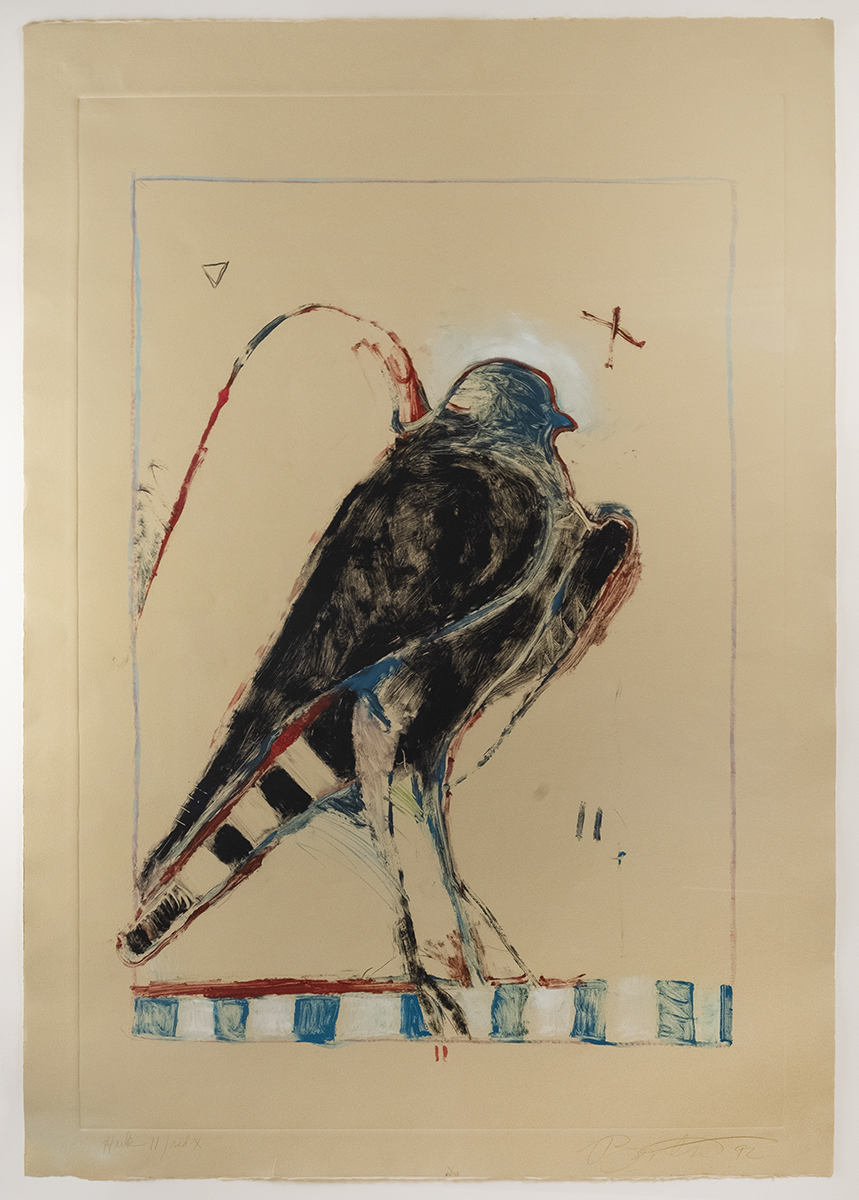 Rick BartowHawk II / red X (1992)Monotype
Rick BartowHawk II / red X (1992)Monotype- 51"h
- 36.5"w
SOLD -
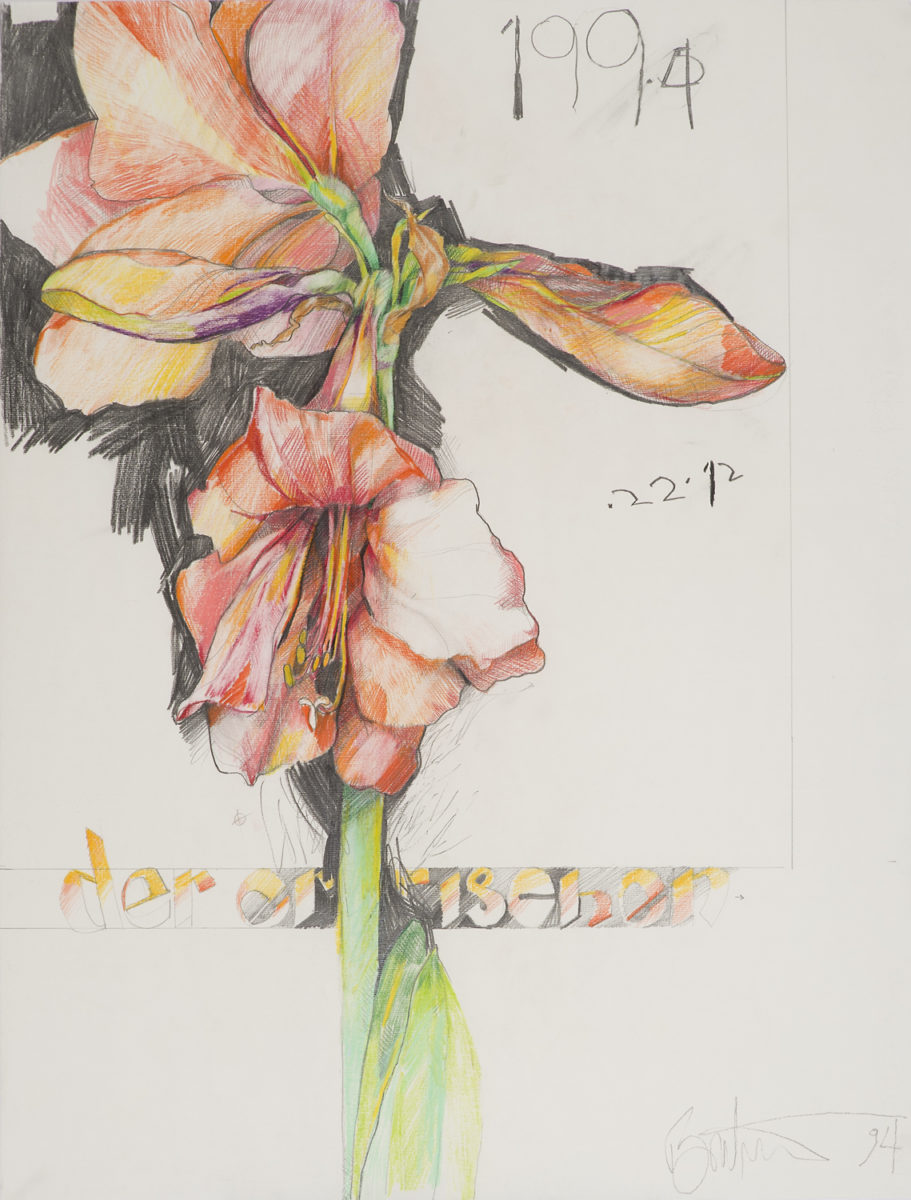 Rick BartowGerman Amaryllis (1994)Mixed Media on Lana Paper, Framed
Rick BartowGerman Amaryllis (1994)Mixed Media on Lana Paper, Framed- 26"h
- 20"w
SOLD -
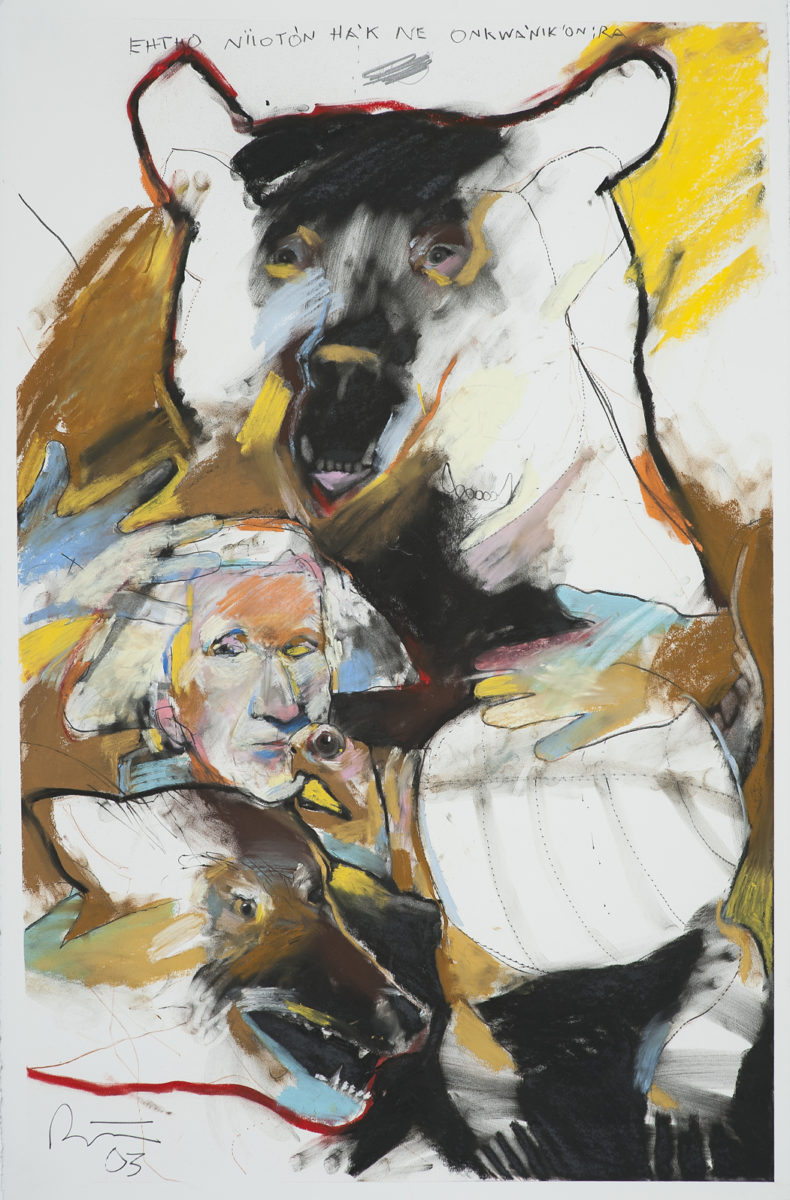 Rick BartowEhtho Niioton Ha’k Ne Onkwa’nik’on ira (2003)Pastel, Graphite on Paper
Rick BartowEhtho Niioton Ha’k Ne Onkwa’nik’on ira (2003)Pastel, Graphite on Paper- 40"h
- 26"w
SOLD -
 Rick BartowCrowching Raven Woman (2006)Monotype
Rick BartowCrowching Raven Woman (2006)Monotype- 30"h
- 22"w
SOLD -
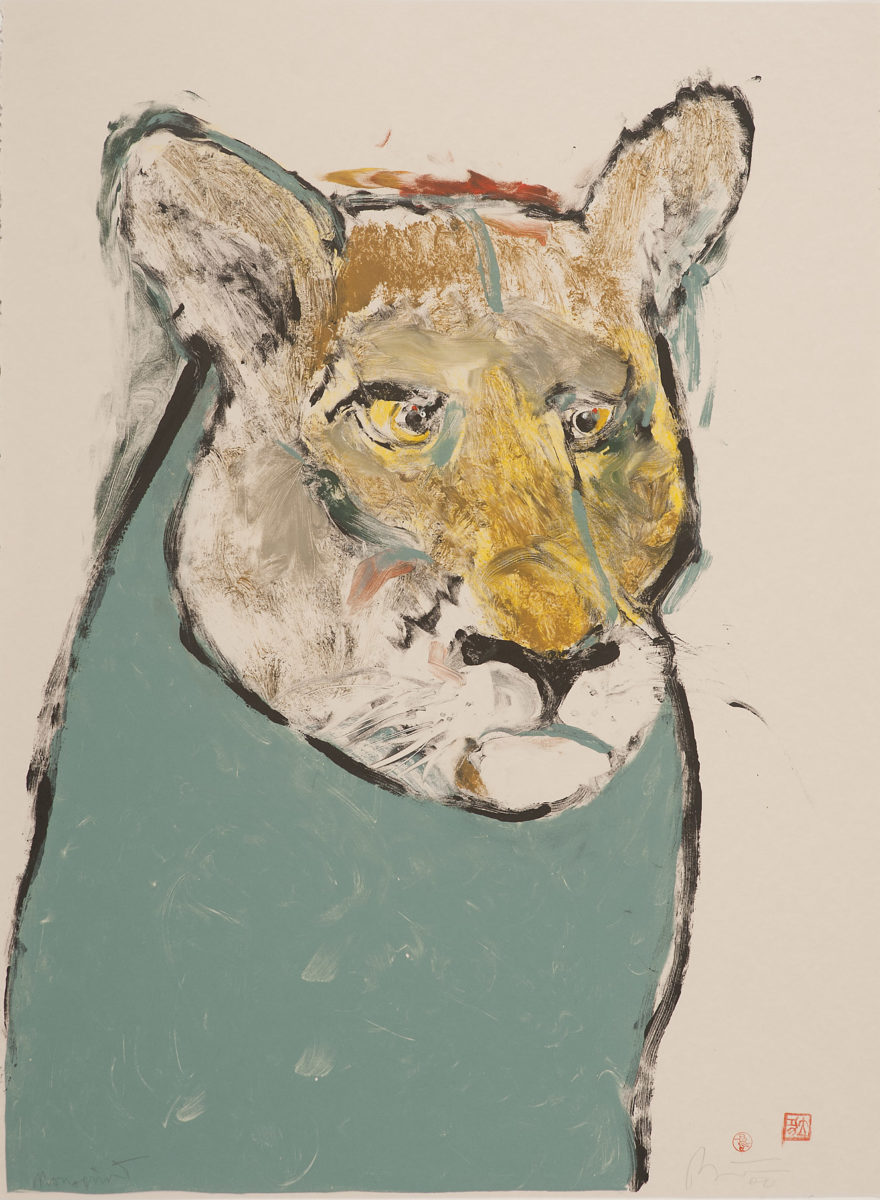 Rick BartowCat III (2002)Monotype
Rick BartowCat III (2002)Monotype- 30"h
- 22"w
SOLD -
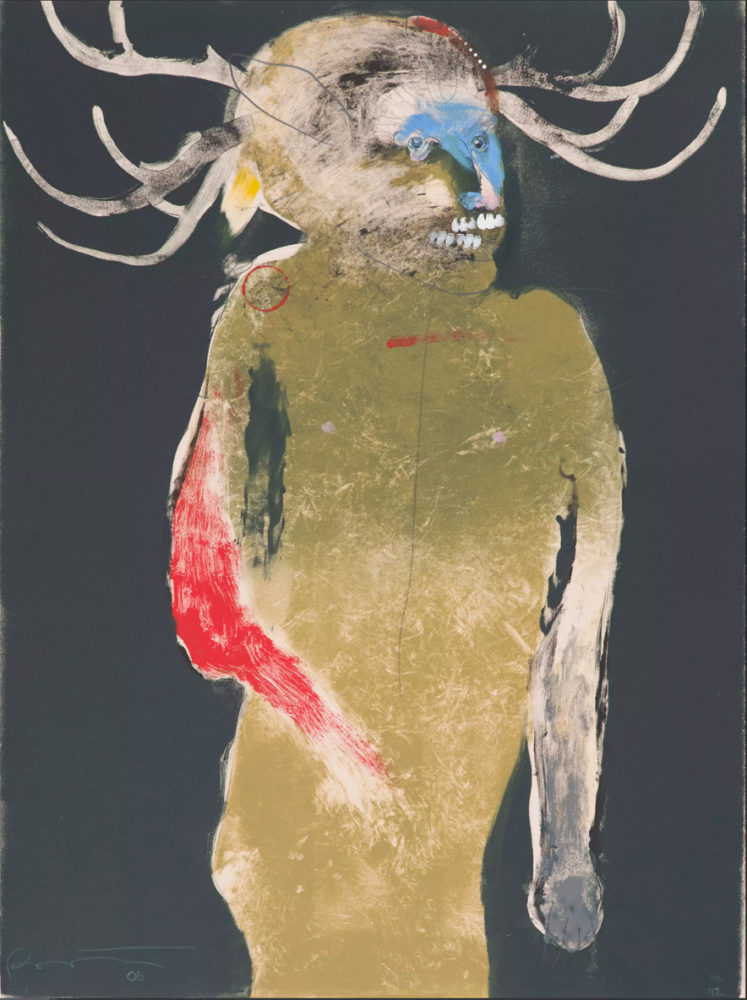 Rick BartowOld Ireland Once More (Cernunnus) – 2006Monotype
Rick BartowOld Ireland Once More (Cernunnus) – 2006Monotype- 30"h
- 22"w
SOLD -
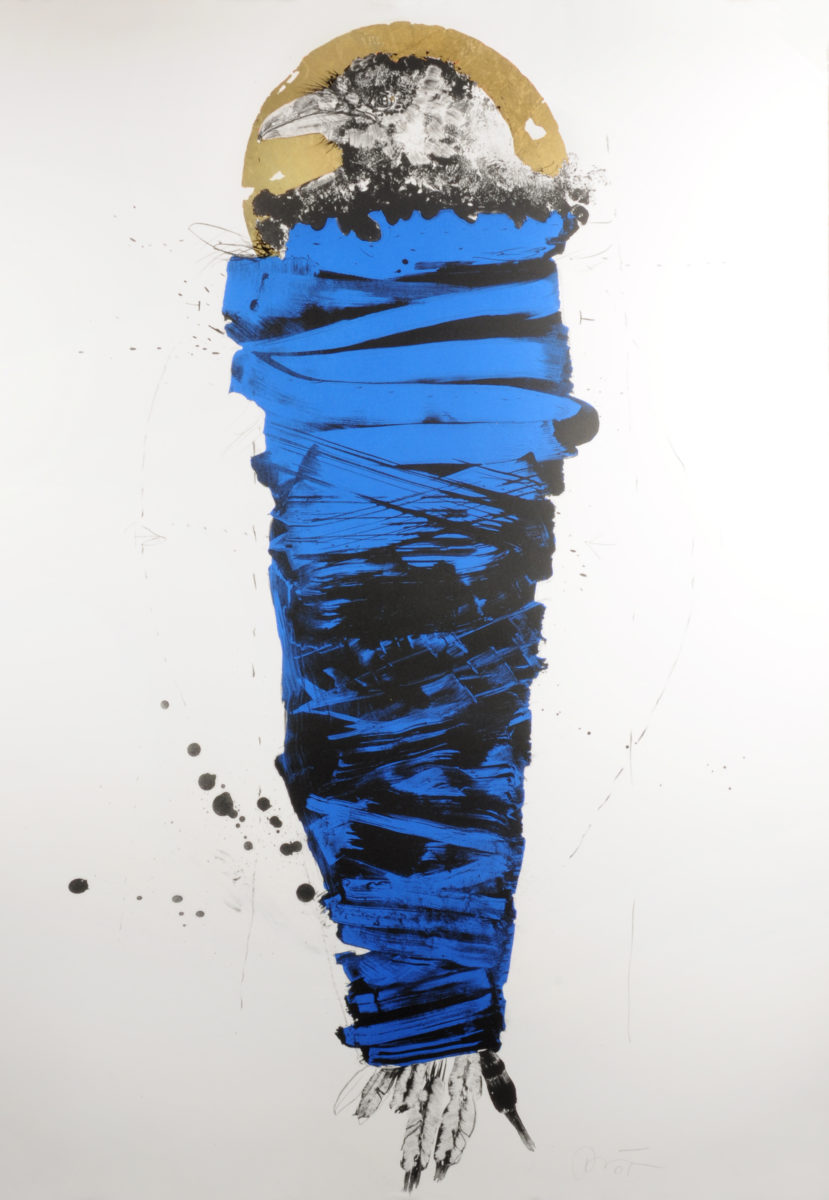 Rick BartowBlue Raven BundleLimited Edition Lithograph
Rick BartowBlue Raven BundleLimited Edition Lithograph- 42.5"h
- 30.5"w
SOLD -
 Rick BartowMaske – BlackLimited Edition Drypoint Etching
Rick BartowMaske – BlackLimited Edition Drypoint Etching- 13"h
- 10"w
SOLD -
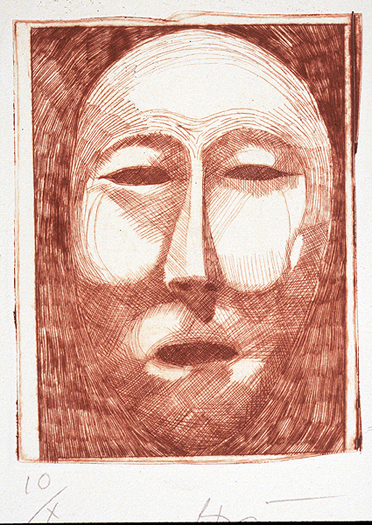 Rick BartowMaske – SepiaLimited Edition Drypoint Etching
Rick BartowMaske – SepiaLimited Edition Drypoint Etching- 13"h
- 10"w
SOLD -
 Rick BartowThe FallLimited Edition Drypoint Etching
Rick BartowThe FallLimited Edition Drypoint Etching- 19"h
- 8"w
SOLD -
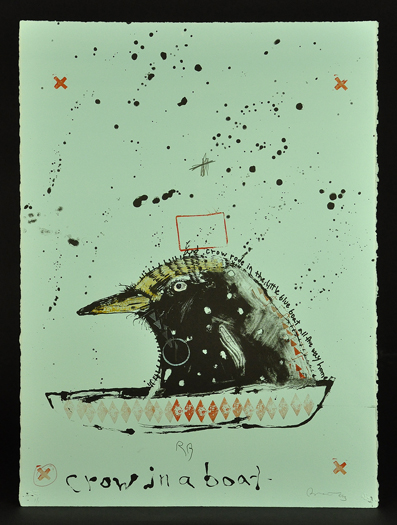 Rick BartowCrow in a BoatMonotype
Rick BartowCrow in a BoatMonotype- 30"h
- 22"w
SOLD -
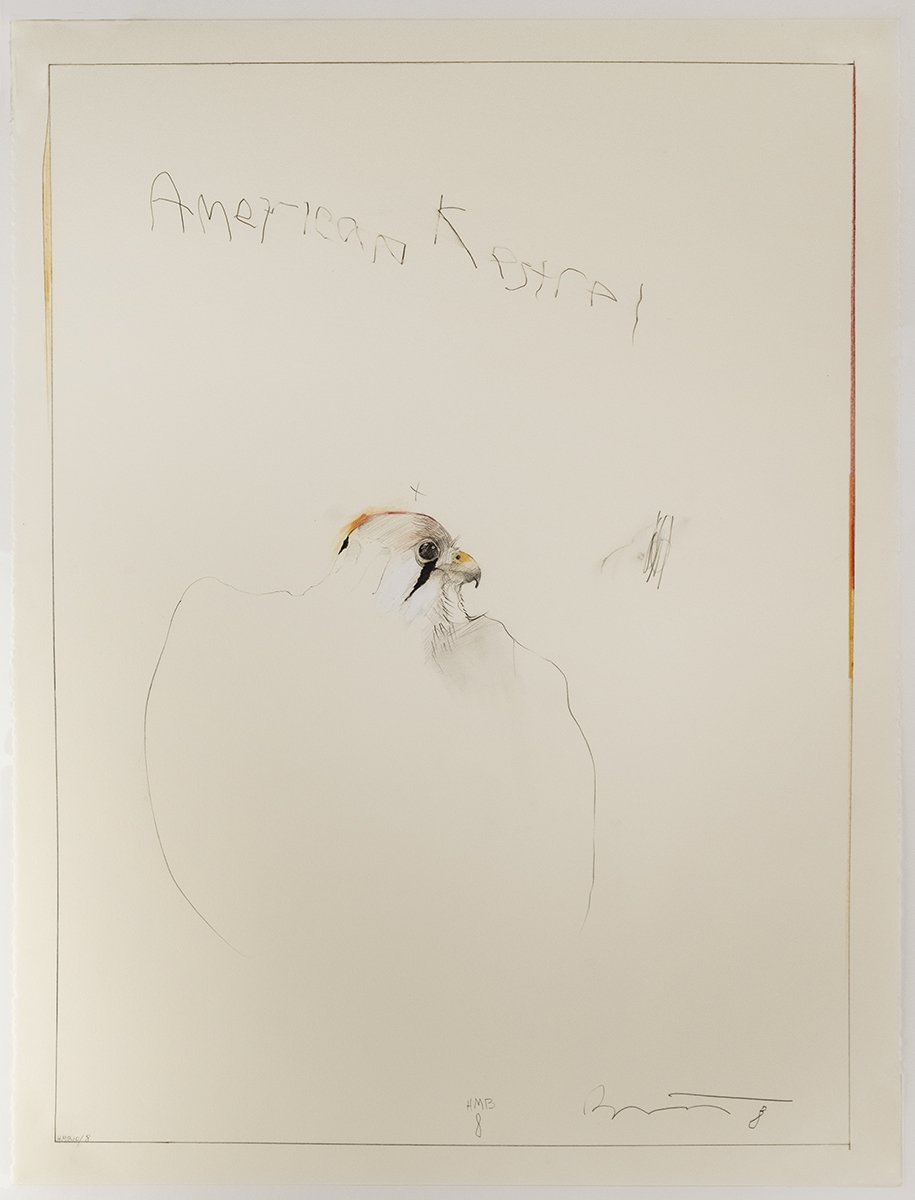 Rick BartowHMB 8Graphite, Colored Pencil, Gouache on Paper
Rick BartowHMB 8Graphite, Colored Pencil, Gouache on Paper- 30"h
- 22"w
SOLD -
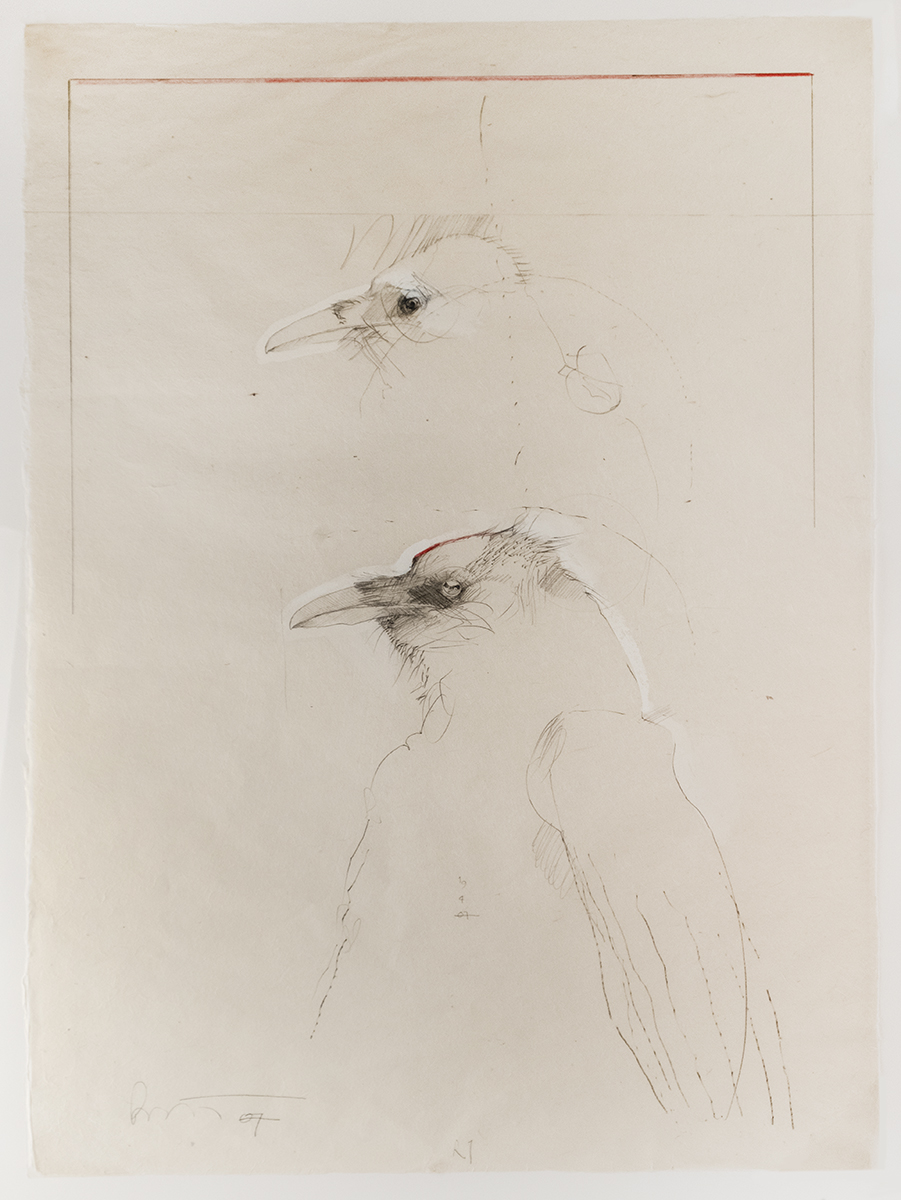 Rick BartowR-1: From the Shinpukuji PortfolioGraphite, Gouache, Ink on Paper
Rick BartowR-1: From the Shinpukuji PortfolioGraphite, Gouache, Ink on Paper- 33.5"h
- 23.5"w
SOLD -
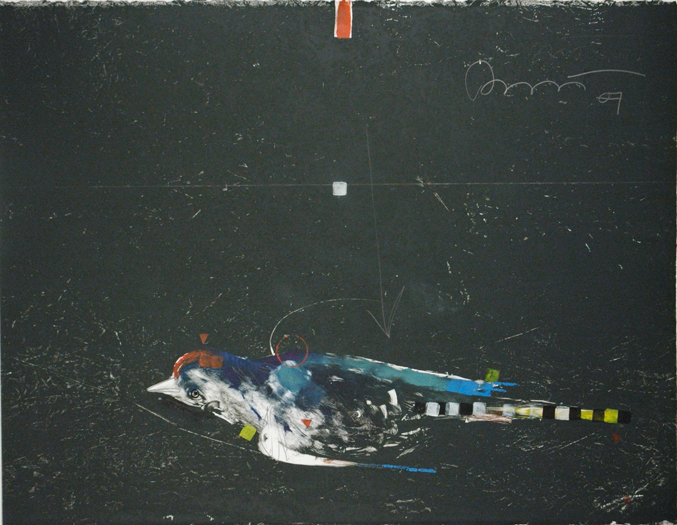 Rick BartowBird Nesting on the Ground for Jim MMonotype, Mixed Media
Rick BartowBird Nesting on the Ground for Jim MMonotype, Mixed Media- 22"h
- 30"w
SOLD -
 Rick BartowDumonstierLimited Edition Drypoint
Rick BartowDumonstierLimited Edition Drypoint- 12"h
- 9"w
SOLD
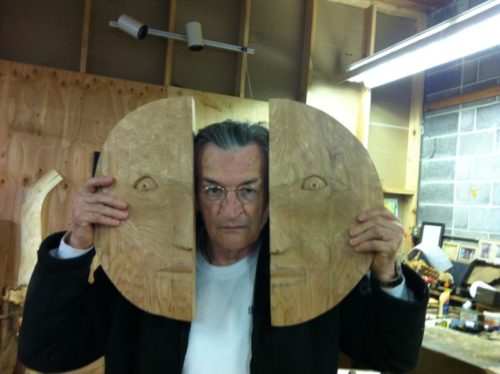 Wiyot artist Rick Bartow (1946-2016) drew deeply from both Native American mythological archetypes and a deeply personal symbolic catalogue, encapsulating his characters in a maelstrom of colors and pulsating lines. After layering charcoal, pastel, ink, graphite, colored pencil and gouache on paper, he then scratched and erased down through the strata to reveal textured gradations of color. By transferring the moment of emotion straight into his work, Bartow was able to leave traces of himself wherever he moved.
Wiyot artist Rick Bartow (1946-2016) drew deeply from both Native American mythological archetypes and a deeply personal symbolic catalogue, encapsulating his characters in a maelstrom of colors and pulsating lines. After layering charcoal, pastel, ink, graphite, colored pencil and gouache on paper, he then scratched and erased down through the strata to reveal textured gradations of color. By transferring the moment of emotion straight into his work, Bartow was able to leave traces of himself wherever he moved.
Bartow’s artistry tapped into the vitality of a parallel world where mythic characters clash and clamor with tangible force. His work invites us to enter this reality, and guides us through its rhythms and rituals. In his hands, the realm of the spirit is not a quiet abstraction, but a place that can bite, bleed and sing.
By contrast, Bartow’s drypoint etchings and monotypes are works of delicacy, revealing a meticulous and controlled side to his vigorous, spontaneous artistry. They were created in collaboration with artists trained in the refined art of Japanese paper-making.
Bartow was born in 1946 near Newport, Oregon, where he lived all of his life. His father—source of his Wiyot heritage—died when he was five, a loss that fueled Bartow’s adult search for roots within the Native American culture. The most significant factor in his personal, as well as artistic development, however, was his service in the Vietnam War. He returned from Vietnam wounded – not physically, but psychologically – and was soon enmeshed in divorce, depression, and alcoholism. In desperation, he joined Alcoholics Anonymous and turned to drawing as a therapeutic outlet. Talented as a child, he had studied art at Western Oregon State College, graduating in 1969 just before being drafted and sent to Vietnam. The heavy, black graphite drawings of this difficult, post-war period were a personal catalyst. Their evident honesty and powerful drawing style soon attracted the attention of artist friends and professionals who provided encouragement and support, enabling him, as he says, “to go public.”
Although the pastel and graphite drawings are the core of Bartow’s art, his paintings, prints, and, most conspicuously, his masks and sculptures make up a prolific body of work. Recent sculptures, in particular, have an animistic spirit comparable to that of African carvings. Bartow’s piece, The Cedar Mill Pole, is currently installed in “The First Ladies Sculpture Garden” at the White House.
Bartow explained, “I work in an expressionistic manner using what I refer to as transformational images, which have evolved from work done in 1979, when I began drawing figures with masks either being removed or falling off the face. These images, I find, coincide with my having stopped drinking, obviously a cathartic period in my life.”
Bartow’s 20 year retrospective, Dog’s Journey, traveled to the University of North Carolina at Pembroke and the Missoula Museum of Art. He was honored in solo exhibits by museums including the National Museum of the American Indian, the Hallie Ford Museum of Art, and a year-long installation at the Jacqueline Kennedy Garden at The White House in Washington, DC. He completed two totem sculptures as a commission from the Smithsonian’s National Museum of the American Indian, Washington D.C. in the summer of 2012 which are on permanent display at the entrance to the museum. A 40 year retrospective—Things You Know But Cannot Explain—ran during 2015 at the Jordan Schnitzer Museum of Art at the University of Oregon. The exhibit subsequently traveled to the IAIA Museum of Contemporary Native Arts in Santa Fe, NM; The Heard Museum in Phoenix, AZ; The Autry in Los Angeles, CA; and the Museum at Washington State University in Pullman, WA. Further sites are in the works.
Learn more about Rick Bartow and his work:
